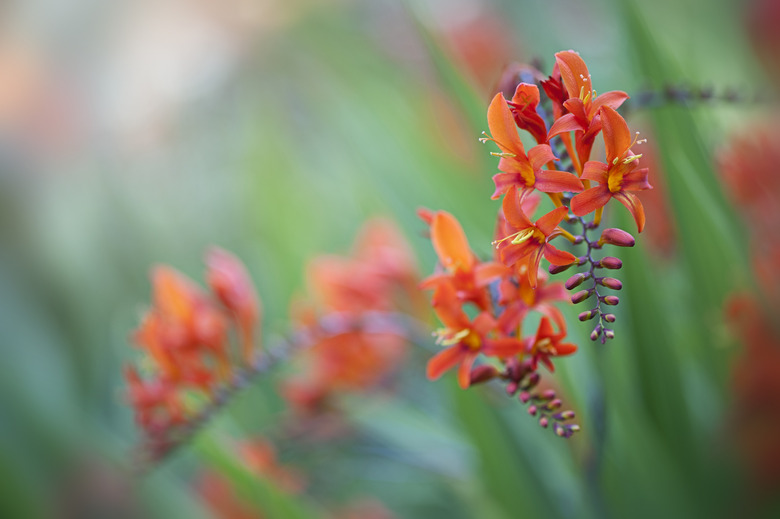How To Propagate Crocosmia From Seed
We may receive a commission on purchases made from links.
Crocosmia (Crocosmia spp., USDA zones 6-9) is a cheerful South African perennial flowering plant that grows from a bulblike structure called a corm. It features bright red, yellow, or orange blooms and attractive, pleated leaves. A relative of the iris, crocosmia grows to a height of 3 to 4 feet tall and excels in shrub borders, flower beds, and background plantings. The cultivar 'Lucifer,' which features crimson blooms, is a popular crocosmia. Although crocosmia is most often planted from corms, it is not difficult to grow plants from seeds, which you can harvest yourself from existing crocosmia plants. You may have to experiment with the seeds from your plant, because some hybrids do not come true from seed. For the best growing conditions, you can propagate crocosmia in a seed tray indoors.
How to Collect Crocosmia Seeds
How to Collect Crocosmia Seeds
If you have a crocosmia plant in your garden or you know someone who does, you can collect the seeds at the end of the growing season. Harvest the seeds when the seed pods on your crocosmia plants start turning brown and develop a papery texture and cracking tops. The seeds inside should be dry and brittle. Separate the seeds from the chaff and organic debris. Place the seeds in a brown paper bag, and store in a cool, dry place until you're ready to sow them. It's important to sow the seeds fairly soon after harvesting them, however, because crocosmia seeds germinate best when they're fresh, unlike many types of seeds that remain viable when stored for long periods of time.
Crocosmia often reseeds itself in warm climates, so you can grow new plants from seed without any effort. This hardy plant can even become invasive. Cut off seed pods before they drop their seeds if your crocosmia is multiplying too rapidly to suit you. You can also share the beautiful blooms by collecting crocosmia seeds and giving them to other gardeners so they propagate their own plants.
How to Start Crocosmia Plants
How to Start Crocosmia Plants
Starting your seeds indoors helps the seedlings get started early so they're ready to transplant outdoors when the weather is right.
- Sow your crocosmia seeds in seed trays indoors.
- Place a 2-inch layer of seed-starting mix in the tray.
- Sow the seeds 1/4-inch deep, and spray the seed-starting mix with a mister after planting to provide moisture without disturbing the seeds.
- Place the seed tray in bright, indirect light. The seedlings grow best at temperatures of 60 to 70 degrees F.
- Water the trays regularly to keep the soil moist. You don't want to let the mix dry out, but you also don't want to let it become soggy or water-logged.
- Your crocosmia seeds should germinate within 2 to 3 weeks.
Transplanting the Flowers
Transplanting the Flowers
When the outdoor conditions are right, it's time to transplant your seedlings into your garden. Transplant your crocosmia seedlings in late spring when they have four to six sets of true leaves. Choose a transplant site in full sun with rich, loose, well-draining soil and enough room to space your crocosmia seedlings at least 1 foot apart. A spot near a window is ideal so you can appreciate the hummingbirds it will attract.
Water the seedlings well after you transplant them and continue to water them thoroughly twice a week while they become established. Mulch around the seedlings to conserve moisture. Fertilize your crocosmia plants after planting with a water-soluble fertilizer formulated for flowering perennials. Repeat fertilization in July when your crocosmia are blooming. Apply a 2-inch-deep layer of mulch in the late fall to protect corms in the ground from freezing and allow them to produce new underground growth during the winter.
Your seedlings will continue to grow throughout the season. In the fall, the seeds they produce can keep your crocosmia collection growing even larger.
